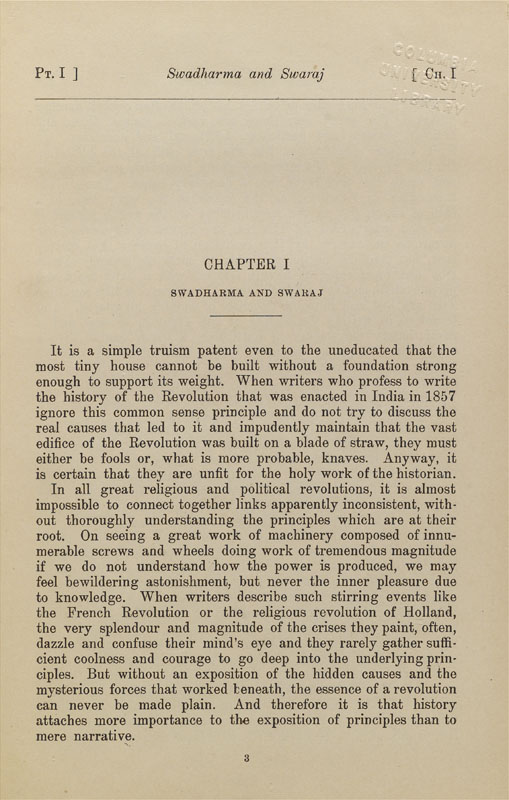Pt. I ]
Swadharma and Swaraj
Ch. I
CHAPTER I
swadharma and SWARAJ
It is a simple truism patent even to the uneducated that the
most tiny house cannot be built without a foundation strong
enough to support its weight. When writers who profess to write
the history of the Revolution that was enacted in India in 1857
ignore this common sense principle and do not try to discuss the
real causes that led to it and impudently maintain that the vast
edifice of the Revolution was built on a blade of straw, they must
either be fools or, what is more probable, knaves. Anyway, it
is certain that they are unfit for the holy work of the historian.
In all great religious and political revolutions, it is almost
impossible to connect together links apparently inconsistent, with¬
out thoroughly understanding the principles which are at their
root. On seeing a great work of machinery composed of innu¬
merable screws and wheels doing work of tremendous magnitude
if we do not understand how the power is produced, we may
feel bewildering astonishment, but never the inner pleasure due
to knowledge. When writers describe such stirring events like
the French Revolution or the religious revolution of Holland,
the very splendour and magnitude of the crises they paint, often,
dazzle and confuse their mind's eye and they rarely gather suffi¬
cient coolness and courage to go deep into the underlying prin¬
ciples. But without an exposition of the hidden causes and the
mysterious forces that worked beneath, the essence of a revolution
can never be made plain. And therefore it is that history
attaches more importance to the exposition of principles than to
mere narrative.
|








